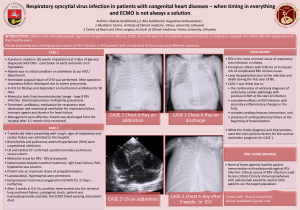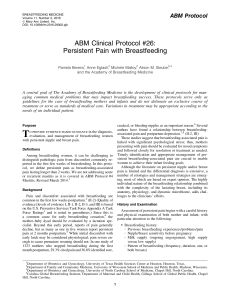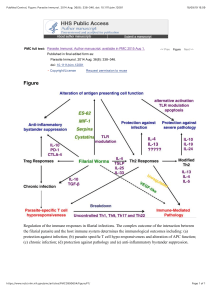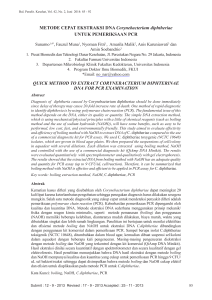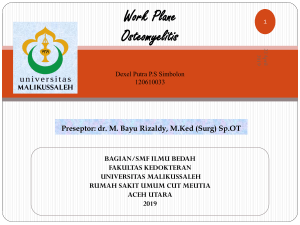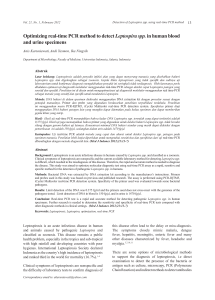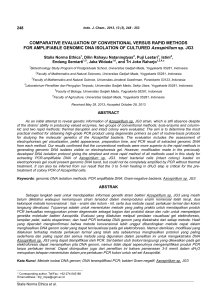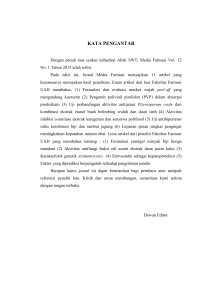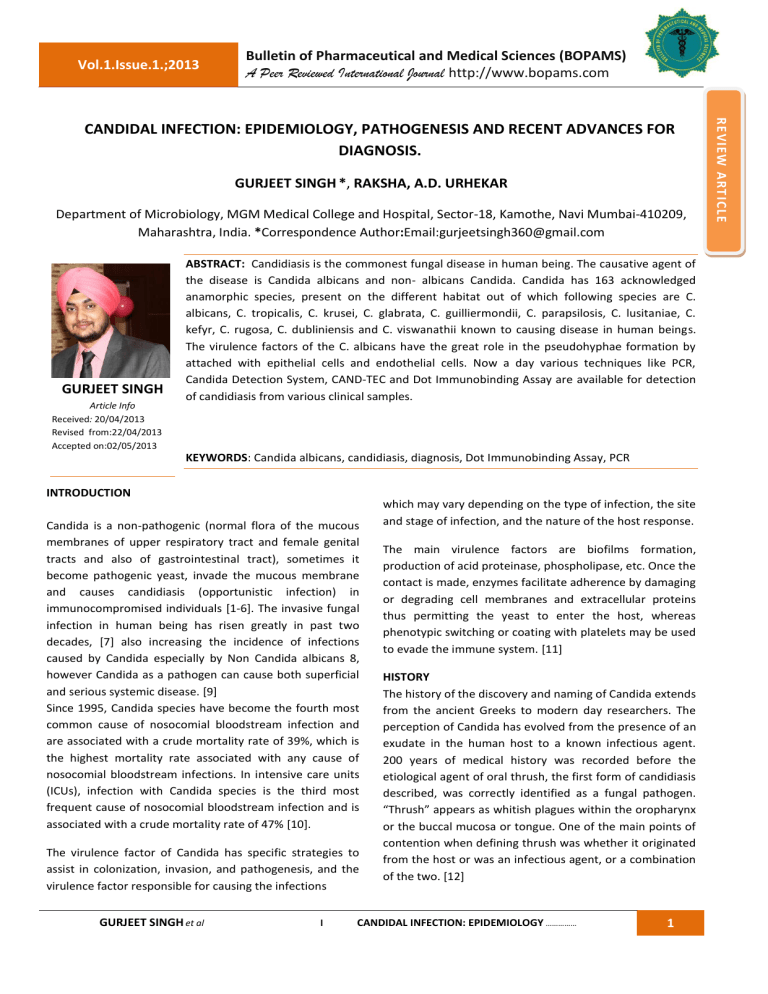
Vol.1.Issue.1.;2013 Bulletin of Pharmaceutical and Medical Sciences (BOPAMS) A Peer Reviewed International Journal http://www.bopams.com GURJEET SINGH *, RAKSHA, A.D. URHEKAR Department of Microbiology, MGM Medical College and Hospital, Sector-18, Kamothe, Navi Mumbai-410209, Maharashtra, India. *Correspondence Author:Email:[email protected] GURJEET SINGH Article Info Received: 20/04/2013 Revised from:22/04/2013 Accepted on:02/05/2013 ABSTRACT: Candidiasis is the commonest fungal disease in human being. The causative agent of the disease is Candida albicans and non- albicans Candida. Candida has 163 acknowledged anamorphic species, present on the different habitat out of which following species are C. albicans, C. tropicalis, C. krusei, C. glabrata, C. guilliermondii, C. parapsilosis, C. lusitaniae, C. kefyr, C. rugosa, C. dubliniensis and C. viswanathii known to causing disease in human beings. The virulence factors of the C. albicans have the great role in the pseudohyphae formation by attached with epithelial cells and endothelial cells. Now a day various techniques like PCR, Candida Detection System, CAND-TEC and Dot Immunobinding Assay are available for detection of candidiasis from various clinical samples. KEYWORDS: Candida albicans, candidiasis, diagnosis, Dot Immunobinding Assay, PCR INTRODUCTION Candida is a non-pathogenic (normal flora of the mucous membranes of upper respiratory tract and female genital tracts and also of gastrointestinal tract), sometimes it become pathogenic yeast, invade the mucous membrane and causes candidiasis (opportunistic infection) in immunocompromised individuals [1-6]. The invasive fungal infection in human being has risen greatly in past two decades, [7] also increasing the incidence of infections caused by Candida especially by Non Candida albicans 8, however Candida as a pathogen can cause both superficial and serious systemic disease. [9] Since 1995, Candida species have become the fourth most common cause of nosocomial bloodstream infection and are associated with a crude mortality rate of 39%, which is the highest mortality rate associated with any cause of nosocomial bloodstream infections. In intensive care units (ICUs), infection with Candida species is the third most frequent cause of nosocomial bloodstream infection and is associated with a crude mortality rate of 47% [10]. The virulence factor of Candida has specific strategies to assist in colonization, invasion, and pathogenesis, and the virulence factor responsible for causing the infections GURJEET SINGH et al l which may vary depending on the type of infection, the site and stage of infection, and the nature of the host response. The main virulence factors are biofilms formation, production of acid proteinase, phospholipase, etc. Once the contact is made, enzymes facilitate adherence by damaging or degrading cell membranes and extracellular proteins thus permitting the yeast to enter the host, whereas phenotypic switching or coating with platelets may be used to evade the immune system. [11] HISTORY The history of the discovery and naming of Candida extends from the ancient Greeks to modern day researchers. The perception of Candida has evolved from the presence of an exudate in the human host to a known infectious agent. 200 years of medical history was recorded before the etiological agent of oral thrush, the first form of candidiasis described, was correctly identified as a fungal pathogen. “Thrush” appears as whitish plagues within the oropharynx or the buccal mucosa or tongue. One of the main points of contention when defining thrush was whether it originated from the host or was an infectious agent, or a combination of the two. [12] CANDIDAL INFECTION: EPIDEMIOLOGY …………… 1 REVIEW ARTICLE CANDIDAL INFECTION: EPIDEMIOLOGY, PATHOGENESIS AND RECENT ADVANCES FOR DIAGNOSIS. Vol.1.Issue.1.;2013 Bulletin of Pharmaceutical and Medical Sciences (BOPAMS) A Peer Reviewed International Journal http://www.bopams.com The earliest reports of thrush predated the concept of a microbial pathogen. In “Of the Epidemics,” Hippocrates described oral candidiasis in fourth century BC as mouths affected with aphthous ulcerations. Rosen Von Rosenstein and Underwood indentified candidal infection in paediatric patients and made the first description of thrush in modern medicine. Bennett (1844) reported the isolation of Candida in sputum of the patient having tuberculosis. Later on the Candida was also reported by many researcher from the other sites i.e. vagina, blood, and from Cerebral Spinal Fluids (CSF). [12,13] EPIDEMIOLOGY: The genus Candida has 163 acknowledged anamorphic species, present on the different habitat. The Candida causes infection in humans which are comparatively restricted natural distribution, and have been discovered primarily in association with human and animals. Candida albicans are most important species and it is responsible for oral thrush, candidiasis, candiduria and Candidemia frequently seen in patients and it is also responsible to cause vulvovaginitis in girls at pubeteric age group. The incidence of Candida species is significantly increases over the past two decades and non-albicans Candida (NAC) continue to replace Candida albicans at most of the clinical sites i.e. blood stream infections. The Candida species found as normal flora in human beings. Common sites are skin, gastrointestinal tract and female genital tract particularly higher in vagina during pregnancy. Many times it is observed that the commensally Candida is causes endogenous infections. Many predisposing factors are seen in superficial and systemic candidiasis. [13] Epidemiologically invasive candidiasis in neonates is a serious and common causes of late onset sepsis with high mortality rate i.e. around 25 - 35%. Incidence this type of infections has raised upto 11 fold over the past 15 years. Candida are the 3rd most frequently seen organism (after coagulase negative Staphylococcus and Staphylococcus aureus), isolated in late onset sepsis in very low birth weight infants (VLBW) i.e., <1,500 g. The preterm infants are predisposed to more Candida infections because of immature immunity and invasive interventions. Candida may be transmitted by vertical i.e. from maternal vaginal infection or nosocomial i.e. from hospital acquired infection. Candida colonizes of health care workers i.e. 30%. Site of colonization is usually the gastrointestinal tract. The predisposing factors for candidiasis in infants are GURJEET SINGH et al l due to immature immunity, use of broad spectrum or multiple antibiotics, central venous catheters, parenteral alimentation and intravenous fat emulsion, colonization with Candida and prolonged urinary catheterization. [14] PATHOGENESIS: The most important species among the genus Candida is the C. albicans. C. albicans containing various known virulence factors which helps in the spreading of infections in human being and favours its pathogenicity. The virulence factors of the C. albicans have the great role in the pseudohyphae formation by attached with epithelial cells (in respiratory tract), endothelial cells (in blood vessels), hyphal switching, surface recognition molecules, phenotypic switching and extracellular hydrolytic enzyme i.e. proteinase and phospholipase production have been suggested to be virulence attributes for Candida. Extracellular hydrolytic enzymes seem to play an important role in candidal overgrowth, as these enzymes facilitate adherence and tissue penetration and hence invasion of the host, among the most important hydrolytic enzymes produced by Candida are phospholipases and secreted aspartyl proteinases (mainly by C. albicans and C. tropicalis). The haemolysin is another most common virulence factor which contributes to candidal pathogenesis. [13,15-21] The Candida including all species secretes the aspartyl proteinase 5 and 9 (SAP5 and SAP9). The maximum amount is secreted by C. albicans followed by C. tropicalis, Candida kefyr and Candida krusei. Studies reported that the following ingestion of yeast cells by phagocytic cells, SAP antigens are expressed by C. albicans and C. tropicalis, but not by C. parapsilosis. [23-25] Due to their virulence factors like adhesions property the colonization of the Candida is take place in superficial tissue (local site) or it invade the deeper into the host tissue in yeast form but they transformed into the hyphal form during active infection. Most of the manifestations associated with biofilm production. Biofilms are defined as microbial communities encased in a matrix of extracellular polymeric substance, which display phenotypic features that differ from their planktonic or free-floating counterparts, individual microorganisms in biofilms are embedded within a matrix of often slimy extracellular polymer. [13, 22] CANDIDAL INFECTION: EPIDEMIOLOGY …………… 2 Vol.1.Issue.1.;2013 Bulletin of Pharmaceutical and Medical Sciences (BOPAMS) A Peer Reviewed International Journal http://www.bopams.com Fig. 1: shows pathogenesis of Candidiasis . DETECTION OF CANDIDIASIS: KOH Wet Mount: The clinical samples are collected depending on the site of infection i.e. superficial lesion or deep seated infection. The whitish patches from the mucous membrane of the mouth and vagina are collected by sterile swabs. Skin scraping and nail clipping are collected in a black paper. Sputum is collected in a wide mouth sterile universal container. Except nail all the specimens are required 10% potassium hydroxide (KOH) and nails required 20% KOH. The 2-3 drops of KOH are take on a laboratory slide and put the specimen over the drop and then covered with a coverslip and for 2-3 hours. Reports KOH mount under the microscope (under 40X objective lens). [13, 22] GURJEET SINGH et al l Culture: For fungal culture the Sabouraud dextrose agar with chloramphenicol (antibiotic) are used. The inoculated slant in incubated at 37 C for 3-4 days and incubated for 7 days or more if required. Cream coloured colonies are seen on the slant. Make the Lactose phenol cotton blue (LPCB) mount to examine the yeast cell and pseudohyphae under the microscopes. [13, 22] CHROMagar Candida is rapid, plate based test for the simultaneous isolation and identification of various Candida species. [13, 23] Study reported that the CHROMagar Candida is useful medium to differentiate the species based on colour development on CHROM agar Candida. Candida was differentiated by the colour produced by the medium as C. dubliniensis, C. albicans, C. krusei, C. tropicalis, and C. glabrata. [27] CANDIDAL INFECTION: EPIDEMIOLOGY …………… 3 Bulletin of Pharmaceutical and Medical Sciences (BOPAMS) A Peer Reviewed International Journal http://www.bopams.com Vol.1.Issue.1.;2013 Fig. 2: shows CHROM agar Candida with different isolation of Candida species. Fig. 3: shows germ tube for presumptive diagnosis of C. albicans. Fig. 4: shows chlamydospore formation after 2 to 3 days of incubation. GURJEET SINGH et al l CANDIDAL INFECTION: EPIDEMIOLOGY …………… 4 Vol.1.Issue.1.;2013 Bulletin of Pharmaceutical and Medical Sciences (BOPAMS) A Peer Reviewed International Journal http://www.bopams.com Germ Tube Test (GTT): The germ tube test is used for the identification of Candida albicans and differentiates the C. albicans from Candida species. This test is used for presumptive identification of Candida species. [13, 23] In case of if the patients suffering with hematologic malignancies in that case production of the antibodies is in low amount, but detectable titers of antibodies to Candida albicans germ tube (CAGT) which can be used for diagnosis of Candida infections.[44] Chlamydospore formation: Cornmeal agar (CMA) or rice starch agar (RSA) is used for detection of chlamydospore by inoculate the suspected strain of the Candida isolates and incubated at 25 C for 2-3 days. The chlamydospores are highly refractile, thick walled, large in shape. These are seen in the case of C. albicans and C. dubliniensis. [13] Polymerase chain reaction (PCR) fingerprinting: PCR fingerprinting has introduced to differentiating the C. albicans from C. dubliniensis. A study reported that it is a challenging problem because of the high degree of similarity in the phenotype between C. dubliniensis and C. albicans. [29] Multiplex PCR has been used to identify various Candida species, particularly C. albicans, C. glabrata, and C. tropicalis in a single sample. [30] PCR has been used to identify the C. dubliniensis in gingival fluid of healthy persons having periodontal disease. The identification was done by using conventional methods as well as PCR assays. C. dubliniensis was isolated and identified in subgingival fluid of periodontal pockets of healthy individuals. [31] Real-time PCR (RT-PCR) and lucigenin-based chemiluminescence have been demonstrated that Candida biofilms can exert resistance to many commonly employed antifungal in the clinical setting. RT-PCR can used for the detection of amplification of the reactions, measured the kinetics and has an advantage over the traditional PCR where agarose gels are used for the detection of PCR amplification at the final endpoint phase of the reaction. 32 C. albicans genes identified that it regulates the signals the oral epithelial cells and vascular endothelial cells. 33 PCR-EIA methods has been used to differentiate the between Candida species through phenotype based identifications between the Centers for Disease Control and Prevention (CDC) laboratories, referring hospitals participating in an active form and surveillance for Candidemia. 35 PCR primers (LH1 and LH2), are based on sequence of the gene encoding the integrinlike protein alpha-INT1p from C. albicans. 37 The C. albicans GURJEET SINGH et al l gene INT1 is similar to vertebrate leukocyte integrins. 38 Primer LH1 is located between nucleotides 401 and 424 on the sequence, while primer LH2 is located between 721 and 744 nucleotide sequences. PCR used for identification of C. albicans from urine samples. PCR assay proved to be more sensitive than the classical culture method and to be more useful for the clinical diagnosis of C. albicans. More trials are needed concerning the detection of C. albicans in clinical samples other than urine. However, it is expected that the PCR assay with the LH1 and LH2 primers may be a useful and valuable tool for the detection of C. albicans in the clinical sample, even when C. albicans is inhibited by the antifungal agents. [36] Recombinant DNA : The recombinant antigens are used for the diagnosis of candidiasis. Detection of antibodies directed against antigens which are expressed on the C. albicans germ tube surface by indirect immunofluorescence has been shown to be valuable for diagnosis. [28] The Candida enzymes detected in sera of patients who have systemic candidiasis, enolase has been found to be highly diagnostic. Advances in molecular biological techniques have also allowed for the completion of the Candida albicans genome sequence. Molecular biology techniques have introduced the production of recombinant antigens which are useful for the discovery and identification of antibodies against them. It has been displayed that the detection of antibodies against purified and well-defined recombinant antigens allows for the diagnosis of Candidal organisms which are invasive in nature. [28] Candida Detection System (CAND-TEC): Candida Detection System, CAND-TEC (Ramco Laboratories, Inc., Houston, Tex.) is introduced to detect the circulating Candida protein antigens in serum. Serum diluted in ratio of 1:2 with diluent. Take equal amount of diluted serum (20 µl) and latex particle coated with rabbit anti-Candida antibody (20 µl) on the slide and mix it. Mixture was rotated at 140 rpm for 10 minutes, read immediately after 10 minutes rotation for agglutination. 39 Specimens with positive screens at 1:2 for Candida antigen were further titrated by using twofold serial dilutions. The endpoint was read as the highest dilution with positive agglutination. The circulating mannan antigen detect with the LA Candida Antigen Detection System (Immuno-Mycologics, Inc., Norman, Okla.). Serum (0.3 ml) mixed with 50 µl of detacher enzyme and incubated at 56°C for 15 minutes. Reaction was stopped by the addition of an enzyme inhibitor. Serum were tested CANDIDAL INFECTION: EPIDEMIOLOGY …………… 5 Vol.1.Issue.1.;2013 Bulletin of Pharmaceutical and Medical Sciences (BOPAMS) A Peer Reviewed International Journal http://www.bopams.com undiluted and at a 1:10 dilution (2 drops of serum with 1 drop of latex particle sensitized with rabbit anti-Candida globulin), then rotated at 160 rpm for 5 minutes the agglutination read immediately. 40, 43 Mannan antigen and anti-mannan antibodies are useful for diagnosis of invasive candidiasis. The performance of combined mannan antigen and anti-mannan antibodies testing is superior to either mannan antigen or anti-mannan antibodies testing. [41] The CAND-TECH test does not appreciably enhance physicians ability to diagnosed invasive candidal infection beyond histopathological and microbiological methods. [42] Dot Immunobinding Assay: The Immobilon membrane (Millipore, Bedford, Mass.) is used for detection of Candida antigen in a 96-well microfiltration apparatus with an adjustable vacuum (Bio-Rad, Richmond, Calif.). The sample was allowed to filter through the membrane by gravity to enhance binding. The primary antibody, rabbit anti-Candida IgM and IgG (DAKO, Santa Barbara, Calif.). The membrane was washed again and 100 µl of a 1:25 dilution of secondary antibody, colloidal gold particles coated with affinity-purified goat anti-rabbit IgG used, allowed to filter by gravity, and then washed. Each gravity filtration step took 45 to 60 min. Antigen-antibody binding was indicated by the deposition of a pink dot. [45] techniques are help to find out the proper management of the disease and their causative agents and reduced morbidity and mortality of patients. The culture takes time for identification of the organisms; it takes 4 – 7 days for growth of the Candida. The CHROM agar Candida is useful method to differentiate between the Candida albicans from other species of the genus Candida by the help of colonies colour of the Candida. REFERENCES 1. 2. 3. Skin test: The test is done for to evaluate the cell mediated immunity in vivo by testing delayed type hypersensitivity. 13 A study reported that the mucocutaneous candidiasis was assessed for delayed (cell-mediated) hypersensitivity to Candida antigen by skin testing, antigen-induced lymphocyte transformation and migration inhibitory factor production. Specific anti Candida precipitating antibody levels were determined by counterimmunoelectrophoresis. A significant correlation (p < 0.001) was observed between the size of the skin reaction and the level of Candida in vitro lymphocyte stimulation. 34 4. CONCLUSION 7. The genus Candida is causing morbidity and mortality in human beings. The virulence factors of the C. albicans have the great role in the pseudohyphae formation by attached with epithelial cells and endothelial cells. Now a day various techniques like PCR, Candida Detection System, CAND-TEC and Dot Immunobinding Assay are available in developed as well as in developing countries for detection of candidiasis from various clinical samples, these GURJEET SINGH et al l 5. 6. 8. Vinitha Mohandas and Mamatha Ballal. Distribution of Candida Species in Different Clinical Samples and Their Virulence: Biofilm Formation, Proteinase and Phospholipase Production: A Study on Hospitalized Patients in Southern India. J Glob Infect Dis. 2011 JanMar; 3(1): 4–8. Jha BK, Dey S, Tamang MD, Joshy ME, Shivananda PG, Brahmadatan KN. Characterization of candida species isolated from cases of lower respiratory tract infection. Kathmandu University Medical Journal (2006), Vol. 4, No. 3, Issue 15, 290-294. Shivanand Dharwad, Saldanha Dominic R.M. Species Identification of Candida Isolates in Various Clinical Specimens with Their Antifungal Susceptibility Patterns. Journal of Clinical and Diagnostic Research. 2011 November (Suppl-1), Vol-5(6): 1177-1181. Clayton YM, Nobel WC - Observation on the epidemiology of Candida albicans. J.Clin. Pathol 1966; 19: 76-78. Sakamoto S, Miura Y. Improved survival from fungaemia in patients with haematological malignancies: Analysis of risk factor for death and usefulness of early antifungal therapy. Eur J Haematol 1993; 51: 156-160. Merlino J, Tambosis E, Veal. Chromogenic tube test for presumptive identification or confirmation of isolates as Candida albicans. J Clin Microbiol 1998; 36: 11571159. Sachin C.D, Ruchi K, Santosh S. In vitro evaluation of proteinase, phospholipase and haemolysin activities of Candida species isolated from clinical specimens Int J Med Biomed Res 2012;1(2):153-157. Lata R Patel, Jayshri D Pethani, Palak Bhatia, Sanjay D Rathod, Parul D Shah. Prevalence of Candida infection and its Antifungal susceptibility pattern in tertiary Care hospital, Ahmadabad. Nat J Med Res Vol. 2(4) 2012, 439-441. CANDIDAL INFECTION: EPIDEMIOLOGY …………… 6 Vol.1.Issue.1.;2013 9. 10. 11. 12. 13. 14. 15. 16. 17. 18. 19. 20. 21. 22. Bulletin of Pharmaceutical and Medical Sciences (BOPAMS) A Peer Reviewed International Journal http://www.bopams.com Alka Nerurkar, Priti Solanky, Nilesh Chavda, Hinal Baria, Binita Desai. Isolation of Candida Species in Clinical Specimens and its Virulence Factor: The Biofilm. Ijmsph, 2012, vol.1 (2), 97-100. Anurag Malani, Jareer Hmoud, Loretta Chiu, Peggy L. Carver, Andrew Bielaczyc, and Carol A. Kauffman. Candida glabrata Fungemia: Experience in a Tertiary Care Center. CID, (2005) 41(1), 975-981. Ramage G, Saville SP, Thomas DP, López-Ribot JL. Candida biofilms; an update. Eukaryot Cell. (2005), vol. 4, 633–8. Logan McCool. The Discovery and Naming of Candida albicans. Jagdish Chander. Textbook of Medical Mycology. 3rd ed. Candidiasis in the Newborn. Intensive Care Nursery House Staff Manual. Pg. 128-129. Schaller M, Borelli C, Korting HC, Hube B. Hydrolytic enzymes as virulence factors of Candida albicans. Mycoses. (2005), 48, 365-377. Tsang CSP, Chu FCS, Leung WK, Jin LJ, Samaranayake LP, Siu SC. Phospholipase, proteinase and haemolytic activities of Candida albicans isolated from oral cavities of patients with type 2 diabetes mellitus. J Med Microbiol. (2007), 56, 1393-1398. Koelsch G, Tang J, Loy JA, Monod M, Jackson K, Foundling SI, Lin X. Enzymic characteristic of secreted aspartic proteases of Candida albicans. Biochem Biophys Acta (2000), 1480, 117-131. Cutler JE. Putative virulence factors of Candida albicans. Annu Rev Microbiol. (1991), 45, 187-218. Fidel PL Jr, Vazquez JA, Sobel JD. Candida glabrata: review of epidemiology, pathogenesis and clinical disease with comparison to C. albicans. Clin Microbiol Rev. (1999), 12, 80-96. Ray TL, Payne CD. Comparative production and rapid purification of Candida acid proteinase from proteinsupplemented cultures. Infect. Immun. (1990), 58, 508514. Dan M, Poch F, Levin D. High rate of vaginal infection caused by non-C.albicans Candida species among asymptomatic women. Med Mycol. (2002), 40, 383386. Alka Nerurkar, Priti Solanky, Nilesh Chavda, Hinal Baria, Binita Desai. Isolation of Candida Species in Clinical Specimens and its Virulence Factor: The Biofilm. ijmsph. (2012), 1 (2), 97-100. GURJEET SINGH et al l 23. Borg M. and Ruchel R. Demonstration of fungal proteinase during phagocytosis of Candida albicans and Candida tropicalis. J Med Vet Mycol. (1990), 28, 314. 24. Ruchel R. leavage of immunoglobulins by pathogenic yeasts of the genus Candida. Microbiol Sci. (1986), 3, 316-319. 25. Ruchel R., Boning B. and Borg M. Characterization of a secretory proteinase of Candida parapsilosis and evidence for the absence of the enzyme under conditions of infection in vitro. Infect Immun. (1986), 53, 411-419. 26. Shruti N, Kavita B, Sriram G, Saraswathi TR, Sivapathasundharam B, Doronthy AL. Comparative study of Candida by conventional and CHROMagar method in non-denture and denture wearers by oral rinse technique. Indian Journal of Dental Research, (2012), 23(4), 490-497. 27. SH Raut and A Varaiya. Differentiation of Candida dubliniensis on CHROMagar and PAL’S agar. Indian Journal of Medical Microbiology, (2009), 27(1), 55-8. 28. Lain A, Eiguezabal N, Amutio E, Fernandez de Larrinoa I, Moragues MD, Ponton J. Use of recombinant antigens for the diagnosis of invasive candidiasis. Clin Dev Immunol. (2008), 1-7. 29. Neppelenbroek KH, Campanha NH, Spolidorio DM, Spolidorio LC, Seo RS, Pavarina AC. Molecular fingerprinting methods for the discrimination between Candida Albicans and Candida dubliensis. Oral Dis. (2006), 12(3), 242-53. 30. Liquori G, Di Onofrio V, Luvariello A, et al. Oral Candidiasis: a comparison between conventional methods and multiplex polymerase chain reaction for species identification. Oral Microbiol Immunol. (2009), 24(1), 76-8. 31. Jewtuchowicz VM, Mujica MT, Brusca MI, et al. Phenotypic and genotypic identification of Candida dubliensis from subgingival sites in immunocompetent subjects in Argentina. Oral Microbiol Immunol. (2008), 23(6), 505-9. 32. Seneviratne CJ, Wang Y, Jin L, Abiko Y, Samaranayake LP. Candida albicans biofilm formation is associated with increased antioxidative capacities. Proteomics 2008; 8(14): 2936-47. 33. Park H, Liu Y, Solis N, et al. Transcriptional responses of Candida albicans to epithelial and endothelial cells. Eukaryot Cell. (2009). CANDIDAL INFECTION: EPIDEMIOLOGY …………… 7 Vol.1.Issue.1.;2013 Bulletin of Pharmaceutical and Medical Sciences (BOPAMS) A Peer Reviewed International Journal http://www.bopams.com 34. Bice D.E., Lopez M., Rothschild H., Salvaggio J. Comparison of Candida-Delayed Hypersensitivity Skin Test Size with Lymphocyte Transformation, Migration Inhibitory Factor Production and Antibody Titer. Int Arch Allergy. (1974), 47, 54–62. 35. Coignard C., S.F. Hurst, L.E. Benjamin, M.E. Brandt, D.W. Warnock and C.J. Morrison. Resolution of discrepant results for Candida species identification by using DNA probes. J Clin. Microbiol. (2004), 42, 858861. 36. Young-Hee Lim and Do-Hyun Lee. Rapid PCR Method for Detecting Candida albicans Using Primers Derived from the Integrin-like Protein Gene aINT1 of Candida albicans. The Journal of Microbiology. (2000), Vol. 38(2), 105-108. 37. Mannarelli, B.M. and C.P. Kurtzman. Rapid identification of Candida albicans and other human pathogenic yeasts by using short oligonucleotides in a PCR. J. Clin. Microbiol. (1998), 36, 1634-1641. 38. Marcilla, A., C. Monteagudo, S. Mormeneo, and R. Sentandreu. Monoclonal antibody 3H8: a useful tool in the diagnosis of candidiasis. Microbiology. (1999), 145, 695-701. 39. CAND-TEC™ c Candida detection system package insert Catalog Number C03/1. 40. J C Fung, S T Donta and R C Tilton. Candida detection system (CAND-TEC) to differentiate between Candida albicans colonization and disease. J. Clin. Microbiol. (1986), 24(4), 542-547. GURJEET SINGH et al l 41. Małgorzata Mikulska, Thierry Calandra, Maurizio Sanguinetti, Daniel Poulain, Claudio Viscoli, et al. The use of mannan antigen and anti-mannan antibodies in the diagnosis of invasive candidiasis: recommendations from the Third European Conference on Infections in Leukemia Critical Care. (2010), 14, 1-14. 42. Todd J Anderson and Deirdre L Church. Evaluation of a Candida antigen detection method (Cand-Tech): Experience from a university teaching hospital. Can J infect Dis. (1991), Vol. 3(4), 167-172. 43. Phillips, Arden Dowd, Peter Jewesson, Greg Radigan, Martin G Tweeddale, Alison Clarke, Ian Geere, and Michael Kelly. Nonvalue of Antigen Detection Immunoassays for Diagnosis ofCandidemia. J. Clin. Microbiol. (1990), 28(10), 2320-2326. 44. Juan Carlos Garci´A-Ruiz, Maria Del Carmen Arilla, Pilar Regu´ Lez, Guillermo Quindo´ S, Alfonso A´ Lvarez,4 And Jose´ Ponto´ N. Detection of Antibodies to Candida albicans Germ Tubes for Diagnosis and Therapeutic Monitoring of Invasive Candidiasis in Patients with Hematologic Malignancies. J. Clin. Microbiol. (1997), Vol. 35(12), 3284–3287. 45. Annett'e C. Reboli. Diagnosis of Invasive Candidiasis by a Dot Immunobinding Assay for Candida Antigen Detection. (1993), Vol. 31(3), 518-523. CANDIDAL INFECTION: EPIDEMIOLOGY …………… 8
